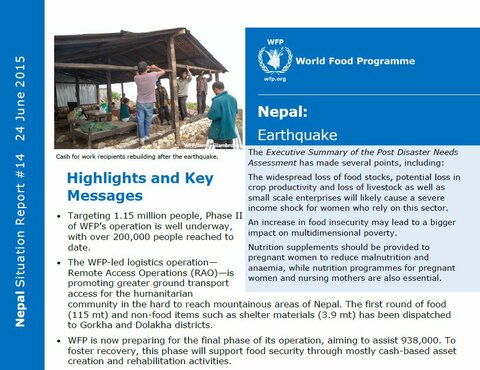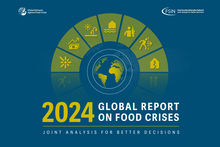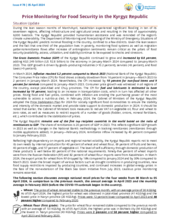
• Targeting 1.15 million people, Phase II of WFP’s operation is well underway, with over 200,000 people reached to date.
• The WFP-led logistics operation—Remote Access Operations (RAO)—is promoting greater ground transport access for the humanitarian community in the hard to reach mountainous areas of Nepal. The first round of food (115 mt) and non-food items such as shelter materials (3.9 mt) has been dispatched to Gorkha and Dolakha districts.
• WFP is now preparing for the final phase of its operation, aiming to assist 938,000. To foster recovery, this phase will support food security through mostly cash-based asset creation and rehabilitation activities.
• WFP will expedite recovery through local investments and employment activities that support the rehabilitation of community infrastructure. An example of this is the rehabilitation of Nepal’s network of trekking trails, which will ultimately boost the tourism industry.
• Initially established by WFP and jointly operated with the Government, the Nepal food security monitoring system (NeKSAP) enabled an effective immediate response for WFP and partners. Its versatility allowed WFP and the Government to conduct rapid field-based assessments that provided informed primary data soon after the 25 April earthquake. WFP and the Government will continue to use this monitoring system to track the food security status of the affected people over time, and inform the reconstruction and rehabilitation efforts.
• WFP is running out of funds to sustain its recovery efforts, as well as the common service logistics and emergency telecommunications operations. Out of a total requirement of US$118.9 million, WFP still needs US$74 million to sustain its operations until the end of the year.
| Document | File |
|---|---|
| WFP Nepal Earthquake Situation Report #14, 24 June 2015 |
HTML | 36.82 KB
Download
|


